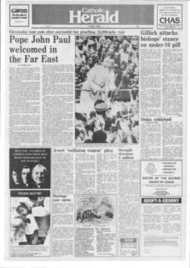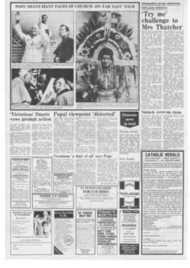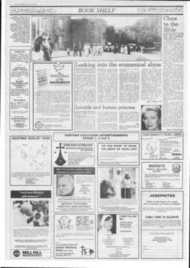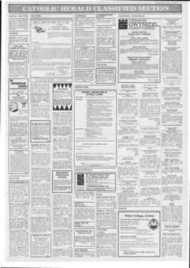Page 10, 11th May 1984
Page 10

Report an error
Noticed an error on this page?If you've noticed an error in this article please click here to report it.
Tags
Share
Related articles
Nationalised Mines •
No Hope Of Success
"machine Mining Is Less
Britain's Black Gold I
Coal Peace Talks Initiative
King coal's seeds of bitterness
Gerard
Noel MORE AND more frequently over the media, as the coal dispute drags on, are we reminded that this is the longest period during which the miners have been out on strike since 1926. My personal guess, based on historical rather than immediately political factors, is that the dispute could indeed drag on and finally come to an end in an atmosphere portending prolonged bitterness.
I was once very ignorant of the history of coalmining in Britain and am, even now, far from expert on the subject. But just over ten years ago I began research, involving much travel round Britain's coalmining areas, on a book ultimately published on May 3, 1976, the fiftieth anniversary of the General Strike.
The book was called The Great Lock-Out of 1926 and it concentrated on the plight of the miners during their long period of futile attrition rather than the nine day wonder of the actual,. so-called, "General Strike". Naturally, I soon discovered during my researches that not only was the strike not "general" but also that the miners themselves were, at no time during the many months they were out of work, actually on strike. Hence the use of the expression "Lock-Out" in the book's title.
The phrase "General Strike" was successfully concocted by the Government to counter the Trade Union assertion that it was a "National Strike", It was, in fact, a partial strike only with the threat that others might be called out at a later date. Withdrawal of public transport (apart from what turned out to be the tactical blunder of a printer's stoppage) was the chief weapon brought to bear in support of the locked-out miners. Hence the popular image, still very much with us, of jolly undergraduates driving trains and buses, and office girls squealing with delight as they packed into any and every vehicle available, particularly young men's sports cars, to get to work.
The dark side of the dispute, then as now, has lacked any glamour. The romance of loyal citizens, headed by some of society's most fashionable figures, rushing about and setting up soup kitchens, are the elements that went into the myth that has prevailed ever since. The "bright young things" were bitterly disappointed when the strike abruptly ended and they had to return to the tedium of idle lives.
The miners, meanwhile having been sacked en masse as of midnight on April 30, 1926, and told that they could return to work only on terms known to be unacceptable, remained locked out for virtually the balance of the year. Some held out a little longer. They finally returned to work utterly beaten, totally demoralised and harbouring the seeds of lasting bitterness.
blog comments powered by Disqus











